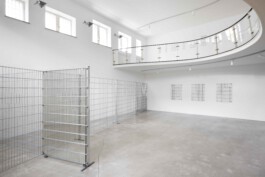
The fence is a pervasive element of our civilization, predominantly functional. It separates states, public from private, demarcates, and protects, creating a clear division in the space. Although its function seems simple, the debate around its existence can be intense. Border issues are central to both personal and political conflicts, with significant humanitarian implications. Erecting a fence demonstrates a claim to power, regardless of its design. From the traditional hunter’s fence to privacy screens and widely used double wire mesh, different aspects influence the choice of fence type.
For his installation at the artothek, Weinfurter chose the double wire mesh fence because it is widespread, quickly assembled using standardized modules, and resembles graphic elements. These traits have made it internationally successful. The uniform structure of the rods provides Weinfurter with a graphic module for installations that appear delicate and endless. Interventions in the grid are subtly unexpected, initially perceived as optical disturbances, and only later recognized as deliberate modifications. These resemble the glitches in collaged digital photos, which create a unique aesthetic in art.
In the exhibition Stören, these interventions are casually arranged in a cross shaped fence setup. A large mirror and the offset grid bars allow the audience to visually “heal” disturbances from specific viewpoints and explore different optical systems. Weinfurter also varies his graphic interventions on small wall reliefs, creating a typeface or notation that AI can read digitally without conveying specific content.
Text by Astrid Bardenheuer
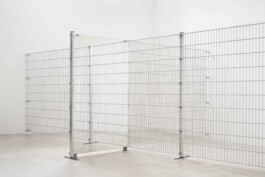
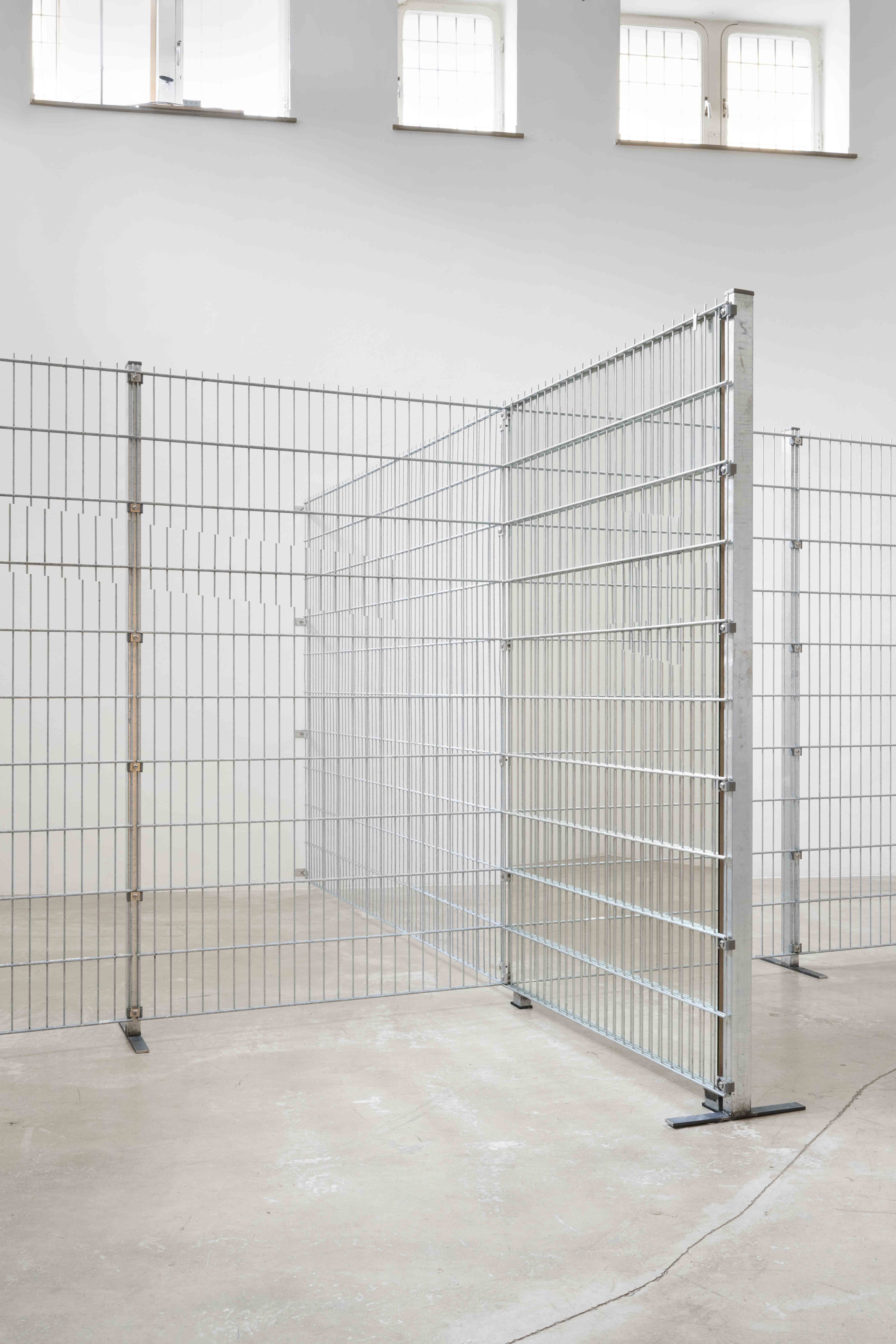
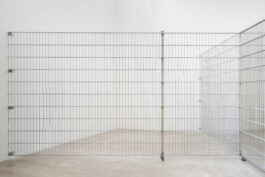
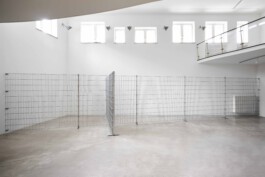
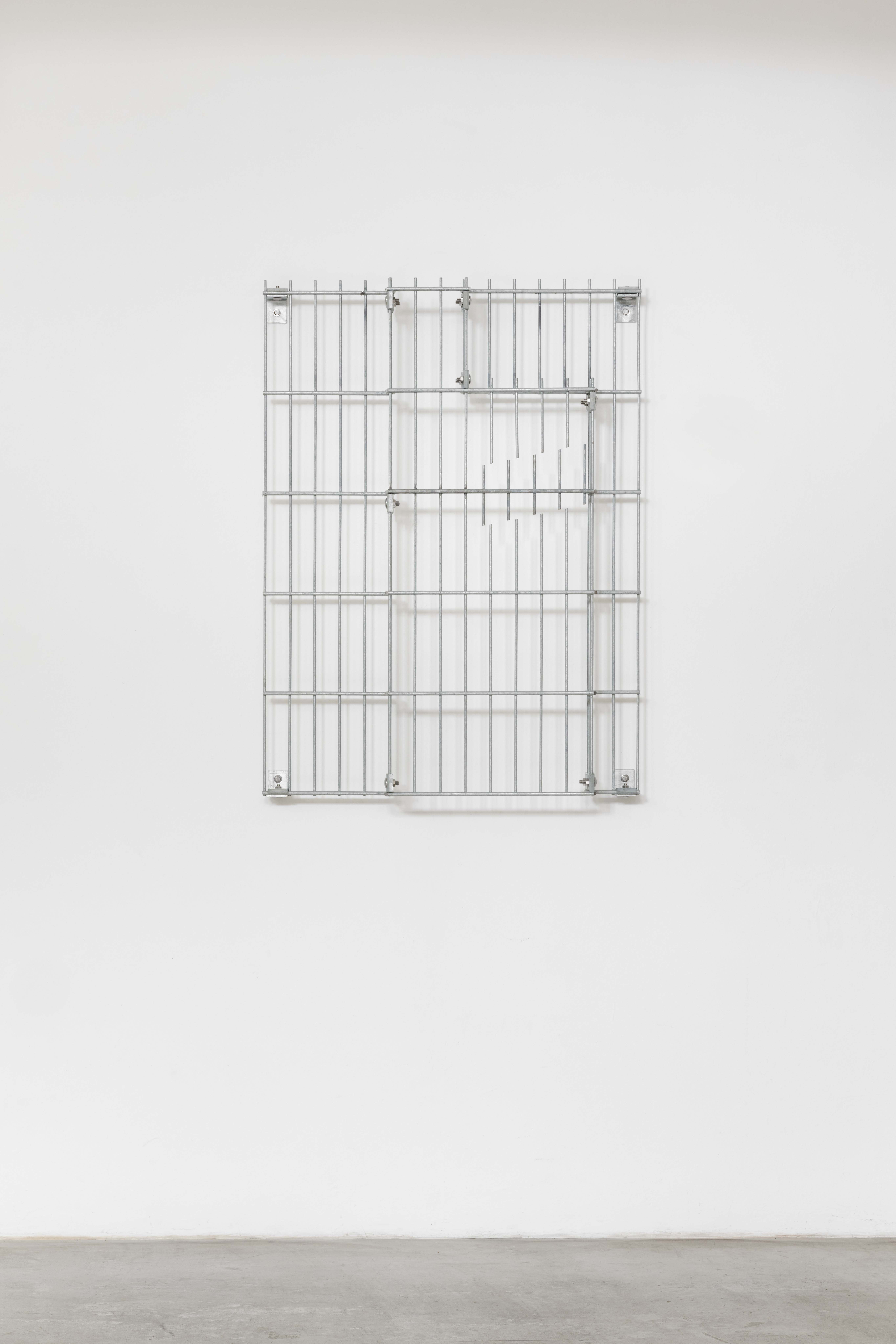

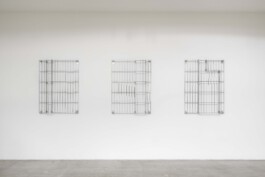

Credits:
Curator: Astrid Bardenheuer // photos: Mareike Tocha // acknowledgement: Anna Boldt, Severin Gruner, Max John
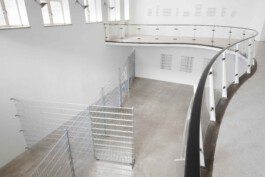

The fence is a pervasive element of our civilization, predominantly functional. It separates states, public from private, demarcates, and protects, creating a clear division in the space. Although its function seems simple, the debate around its existence can be intense. Border issues are central to both personal and political conflicts, with significant humanitarian implications. Erecting a fence demonstrates a claim to power, regardless of its design. From the traditional hunter’s fence to privacy screens and widely used double wire mesh, different aspects influence the choice of fence type.
For his installation at the artothek, Weinfurter chose the double wire mesh fence because it is widespread, quickly assembled using standardized modules, and resembles graphic elements. These traits have made it internationally successful. The uniform structure of the rods provides Weinfurter with a graphic module for installations that appear delicate and endless. Interventions in the grid are subtly unexpected, initially perceived as optical disturbances, and only later recognized as deliberate modifications. These resemble the glitches in collaged digital photos, which create a unique aesthetic in art.
In the exhibition Stören, these interventions are casually arranged in a cross shaped fence setup. A large mirror and the offset grid bars allow the audience to visually “heal” disturbances from specific viewpoints and explore different optical systems. Weinfurter also varies his graphic interventions on small wall reliefs, creating a typeface or notation that AI can read digitally without conveying specific content.
Text by Astrid Bardenheuer









Credits:
Curator: Astrid Bardenheuer // photos: Mareike Tocha // acknowledgement: Anna Boldt, Severin Gruner, Max John